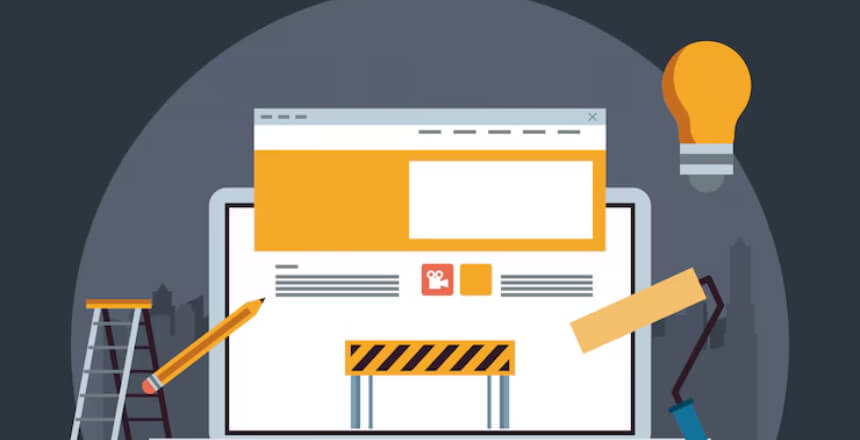WordPress is most popular content management systems that offers many features and benefits that make it an ideal choice for building and managing a website.
In fact, 43.3% of website around the world is built on WordPress. (Source:W3Techs)
But just like any other technology, it requires regular maintenance to ensure smooth functioning.
Unfortunately, many website owners often neglect or overlook certain aspects of WordPress maintenance which can lead to serious consequences such as security breaches, slow loading speeds, and plugin conflicts.
In this post, we’ll see 8 common WordPress mistakes you need to avoid to keep your WordPress site running smoothly and effectively.
Let’s check them out:
What Are the Common WordPress Mistakes?
Here are most common WordPress errors that you should be aware of:
Not Backing Up Regularly
It’s common for website owners to overlook the importance of regular backups.
However, not doing so can have disastrous consequences. A sudden website crash or malware attack can wipe out all your hard work and data if you don’t have a recent backup to restore from.
For this reason, maintenance solutions like WP SitePlan offer automated backups to ensure your website data is always safe and secure.
Imagine the amount of time and effort that would be lost if you had to start from scratch in rebuilding your website.
No matter how small or big your website is, it’s crucial to back up regularly and have a plan in place for disaster recovery.
Ignoring WordPress Updates
Ignoring WordPress updates is another common mistake that can severely impact your site’s performance and security.
Regular updates are released for WordPress core, themes, and plugins to patch security vulnerabilities, add new features, and improve overall performance.
Neglecting these updates exposes your site to potential security risks and causes compatibility issues with plugins or themes.
When you ensure your WordPress installation, themes, and plugins are always up to date, you can protect your website from known vulnerabilities and maintain optimal performance.
The simplest way to keep your site updated is by setting up automatic updates or using a maintenance solution that takes care of it for you.
Using Outdated Plugins and Themes
There are many WordPress themes and plugins that we love to try out on our websites. However, that not all plugins and themes are regularly updated by their developers.
Using outdated or abandoned plugins and themes can expose your website to security risks, and compatibility issues, and even slow down your site’s loading speed.
Before installing a new plugin or theme, don’t forget to check its last update date and reviews from other users.
It’s always best to use well-maintained and regularly updated themes and plugins to avoid any issues down the line.
Overlooking Site Security
Perhaps the most important aspect of WordPress maintenance is ensuring site security. Due to the rise in cyberattacks, take preventive measures to secure your website.
Some common security practices include using strong passwords, limiting login attempts, and installing a security plugin like Wordfence.
Additionally, regularly scanning for malware or suspicious activity can identify any potential threats and allow you to take immediate action before any damage occurs.
Think of security as an ongoing process rather than a one-time task to keep your site and its data safe.
Ignoring Website Performance
Ignoring website performance can lead to slow load times, higher bounce rates, and decreased conversions.
You can use tools like Google PageSpeed Insights or GTmetrix to test your website speed. These tools will tell you what affecting your site’s speed.
Optimizing images, limiting the use of plugins, and using a caching plugin can significantly improve your site’s performance.
For larger websites, using a CDN (content delivery network) can also improve loading speeds for visitors across different regions.
Or you can opt for a maintenance solution that takes care of performance optimization for you.
Not Monitoring Website Health
Failing to monitor the overall health of your WordPress site is akin to neglecting regular check-ups for your physical well-being.
Just as small health issues can escalate into major concerns if left unchecked, minor website issues can grow into significant problems affecting functionality and user experience.
WordPress offers a Site Health tool within its dashboard, providing insights and recommendations for improving your website’s performance and security.
Regularly checking this can help you proactively address any issues, ensuring your site remains in optimal condition.
Neglecting this aspect of maintenance will result in decreased performance, security vulnerabilities, and a poor user experience.
Worst of all, it can drive visitors away from your website.
Avoiding Mobile Optimization
With the majority of internet users accessing websites on their mobile devices, you must make sure that your website is optimized for mobile viewing.
If your site isn’t responsive or optimized for different screen sizes, you risk losing potential visitors and customers.
Regularly check how your site looks and functions on different devices and make any necessary adjustments to improve the user experience for all visitors.
This includes optimizing images, using a mobile-friendly theme, and ensuring all elements are easily accessible on smaller screens.
As Google prioritizes mobile-friendly sites in search results, so don’t neglect this aspect of maintenance.
Neglecting SEO Best Practices
Website maintenance goes hand in hand with SEO (search engine optimization). Neglecting regular updates and monitoring can negatively impact your site’s search engine rankings.
Regularly updating content, using relevant keywords, and optimizing meta tags are all essential for improving your site’s visibility on search engines.
Staying up to date with Google’s algorithm updates and making necessary adjustments can also improve your SEO efforts.
Ignoring these practices can result in a drop in website traffic and potential leads or sales.
The last thing you want is for your website to become invisible on search engines due to a lack of maintenance.
Final Words!
Maintaining a WordPress website is about maximizing its potential and ensuring it serves your goals effectively.
Avoiding these common mistakes is crucial for the security, performance, and overall health of your website.
You should do the regular backups, timely updates, proper security measures to improve the performance and SEO of your website. Additionally, by taking care of these things you can create a robust, secure, and user-friendly website.
Your website is often the first impression potential customers have of your business; make it count.
With the right website maintenance practices, your WordPress site can continue to grow and convert more visitors into customers.









